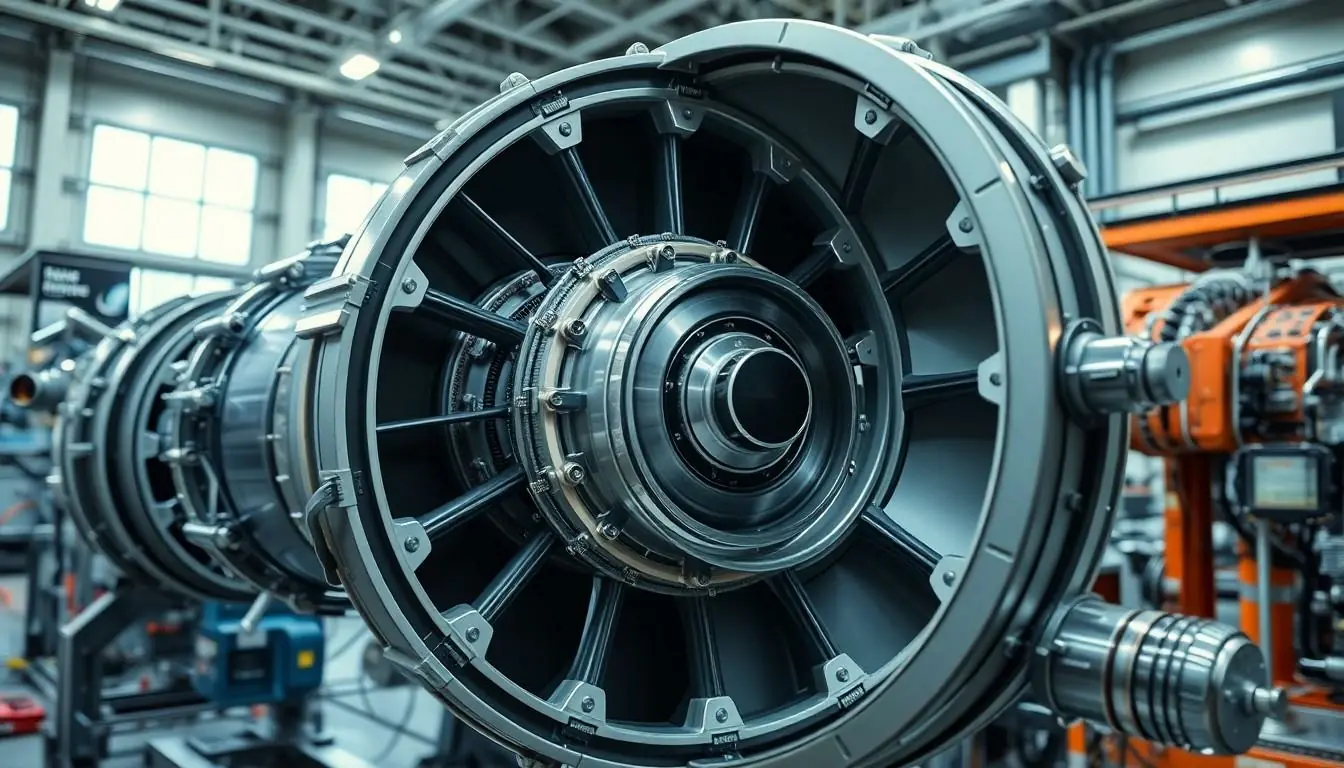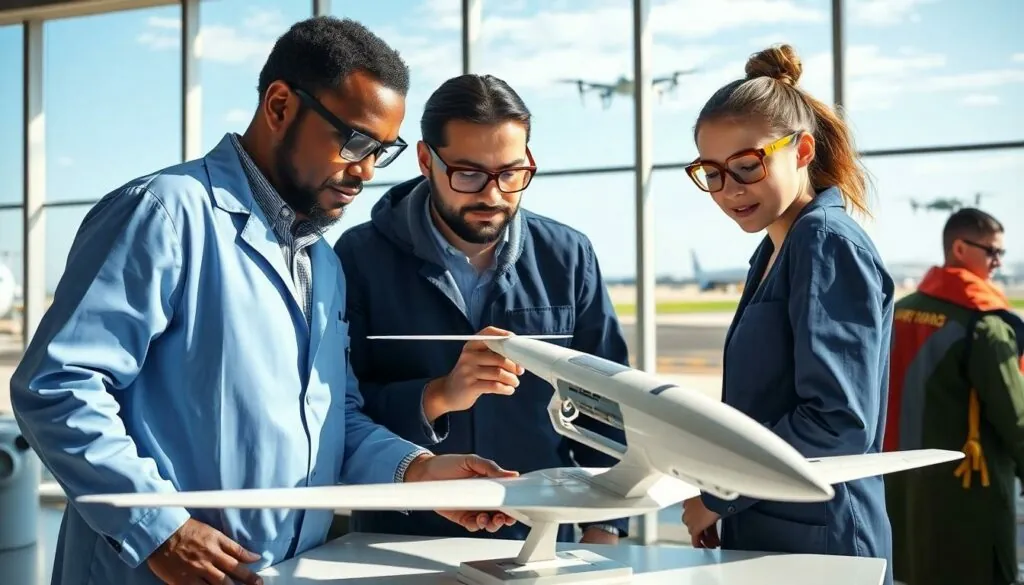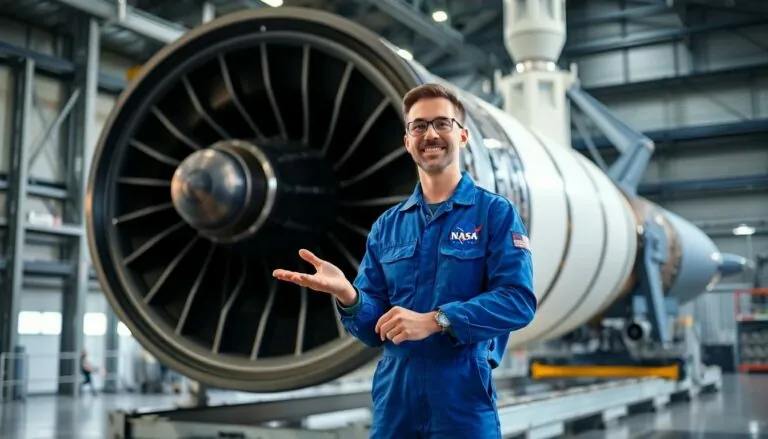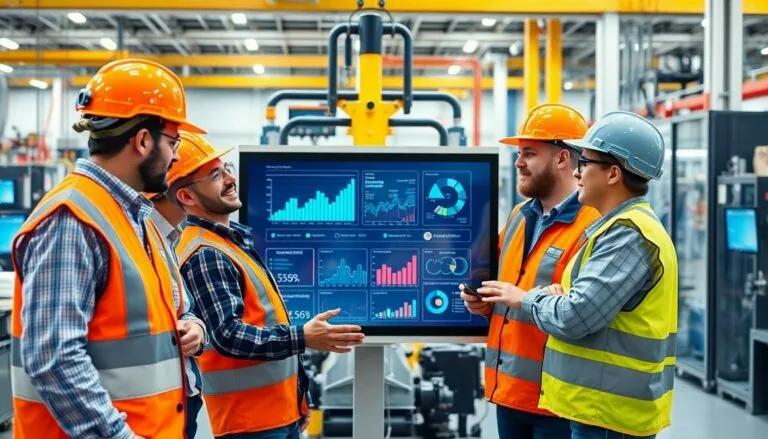Table of Contents
ToggleAerospace technology isn’t just for rocket scientists and sci-fi enthusiasts anymore. It’s the driving force behind innovations that shape our everyday lives, from the GPS guiding your morning commute to the satellites ensuring your Netflix binge-watching goes uninterrupted. Who knew that launching a spacecraft could lead to better weather forecasts and more efficient air travel?
Overview of Aero Space Technology
Aerospace technology encompasses various fields, including aviation and space exploration. It significantly influences communication, navigation, and transportation. Innovations in satellite systems enhance global positioning systems (GPS) and improve data transmission, benefiting countless industries.
Drones represent a growing segment of this technology. They assist in tasks ranging from package delivery to agricultural monitoring. Their applications continue to expand as regulations evolve, showcasing the flexibility of aerospace advancements.
Space exploration initiatives fuel scientific research. These missions not only provide data about other celestial bodies but also lead to technological breakthroughs on Earth. Companies such as SpaceX and Blue Origin drive competition and innovation in this arena.
Weather forecasting has also benefited from aerospace technology. Satellites play a crucial role in gathering meteorological data, resulting in more accurate predictions. Such advancements aid governments and organizations in disaster preparedness and recovery efforts.
Air travel efficiency improves due to ongoing research and development. Engineers focus on reducing fuel consumption and emissions while enhancing passenger comfort. Investments in aerospace technology pave the way for greener, safer aviation.
Materials science is another essential aspect of aerospace technology. Lightweight and durable materials, such as carbon composites, enable more efficient aircraft designs. These improvements lead to increased performance across various aerospace applications.
The integration of artificial intelligence and machine learning continues to shape the future of the aerospace sector. Autonomous systems enhance safety and operational efficiency in both commercial and military capacities. Innovations that emerge from this collaboration promise to redefine standards in aerospace technology.
Key Components of Aero Space Technology

Aerospace technology consists of various critical components that enhance functionality and performance. Understanding these components provides insight into this evolving field.
Propulsion Systems
Propulsion systems stand at the heart of aerospace technology. These systems generate the thrust required for both aircraft and spacecraft. Rocket engines, such as those used in SpaceX’s Falcon 9, utilize liquid or solid propellants, achieving remarkable power and efficiency. Jet engines also play a significant role in commercial aviation, converting fuel into thrust while ensuring optimal fuel consumption. Innovations in electric and hybrid propulsion are emerging, offering potential reductions in emissions and noise pollution. Both military and civilian applications benefit from advancements in propulsion technology, enhancing speed and maneuverability.
Avionics
Avionics encompass the electronic systems used for communication, navigation, and monitoring within aerospace vehicles. These systems include flight control computers, GPS receivers, and radar, ensuring safe and efficient operation. Modern aircraft employ sophisticated avionics to enhance situational awareness for pilots. For instance, automatic dependent surveillance broadcast (ADS-B) systems improve air traffic management by providing real-time location data. Recent developments in artificial intelligence integrate into avionics, enabling quick decision-making processes. Enhanced cybersecurity measures are also crucial to protect sensitive avionics systems from threats.
Materials and Structures
Materials and structures lay the foundation for advanced aerospace designs. Lightweight composites, such as carbon fiber and titanium alloys, contribute to improved fuel efficiency and performance. These materials withstand extreme conditions, enabling aircraft and spacecraft to endure various stressors. Innovative structural designs, like delta wings and fuselage optimizations, maximize aerodynamic efficiency. Research into self-healing materials and advanced coatings enhances durability and lifespan. Sustainable materials also emerge as a focus, minimizing environmental impacts while maintaining performance standards. Each material choice directly affects overall system efficiency and safety in aerospace operations.
Recent Advancements in Aero Space Technology
Recent advancements in aerospace technology significantly impact various sectors. Innovations in space exploration and flight safety lead to enhanced capabilities and efficiencies.
Space Exploration Innovations
Space exploration benefits from breakthroughs in propulsion systems and robotic technologies. Mars rovers equipped with advanced sensors enhance data collection and analysis. NASA’s Artemis program, aiming to return humans to the Moon, signifies a leap in lunar landing technology. Collaborations with private companies, like SpaceX’s Starship, aim to facilitate Mars colonization. Additionally, satellite advancements facilitate tracking space debris, enhancing mission safety. A focus on in-situ resource utilization aims to support sustainable exploration.
Flight Safety Enhancements
Flight safety advancements improve operational protocols and technology. Automation of cockpit systems reduces human error, increasing efficiency and reliability during flights. Modern aircraft leverage AI algorithms, allowing for predictive maintenance and timely repairs. Enhanced collision avoidance systems ensure safer navigation through busy airspaces. Furthermore, cybersecurity measures protect sensitive flight data from potential threats. Improved training simulations for pilots elevate readiness in emergency situations. The integration of advanced weather tracking systems enables better decision-making for flight routes. Each innovation contributes to a safer aviation environment.
Future Trends in Aero Space Technology
Aerospace technology continues evolving, introducing innovative concepts that shape the industry. Two critical trends emerge prominently: sustainable aviation and autonomous aircraft.
Sustainable Aviation
Sustainable aviation focuses on minimizing environmental impacts through cleaner technologies. The development of biofuels demonstrates potential to reduce greenhouse gas emissions significantly, offering an eco-friendly alternative to traditional jet fuels. Electrification of aircraft also shows promise, with electric and hybrid systems aiming to decrease fuel consumption. Research into advanced materials enhances aerodynamic efficiency, further contributing to sustainability. Initiatives promoting the recycling of aircraft components create a circular economy, lessening waste. Collaboration among manufacturers, governments, and research institutions propels these advancements, aiming for carbon-neutral flight by 2050.
Autonomous Aircraft
Autonomous aircraft represent a revolutionary step in aerospace technology. Drones and UAVs equipped with sophisticated AI algorithms enhance operational efficiency across various applications, including cargo delivery and surveillance. Companies invest in developing pilotless commercial aircraft, aiming to optimize fuel usage and reduce operational costs. Enhanced safety protocols ensure reliability, which encourages regulatory agencies to support autonomous technology. Integration with air traffic management systems facilitates coordinated operations, addressing congestion and safety. As these technologies mature, they redefine the standards for air travel, creating opportunities for increased accessibility and affordable transportation solutions.
Aerospace technology continues to shape the modern world in profound ways. Its influence extends beyond aviation and space exploration into everyday life, enhancing communication and navigation systems that people rely on daily. As advancements in propulsion systems and materials science evolve, the industry moves closer to achieving sustainable and efficient air travel.
The future promises exciting developments with autonomous aircraft and cleaner technologies paving the way for a greener aviation sector. With ongoing research and innovation, aerospace technology will not only redefine air travel but also contribute positively to various industries and global challenges. The journey ahead is filled with potential, ensuring that aerospace technology remains at the forefront of human progress.







